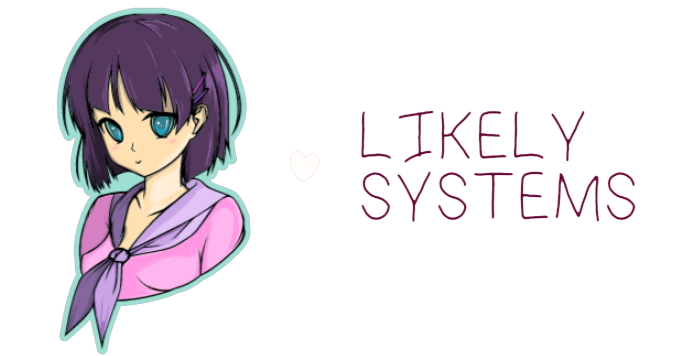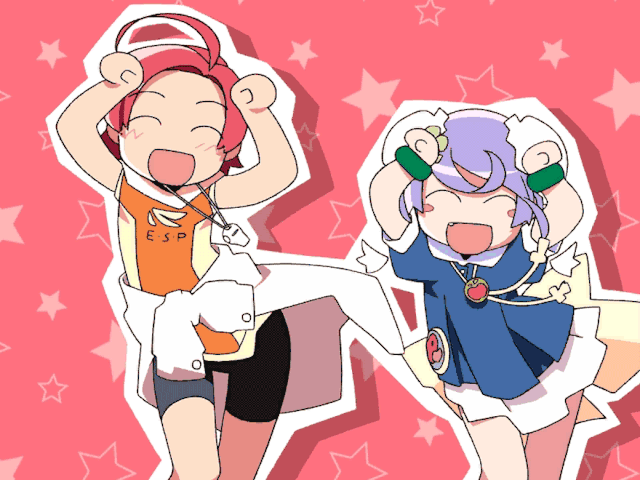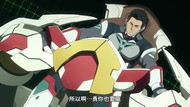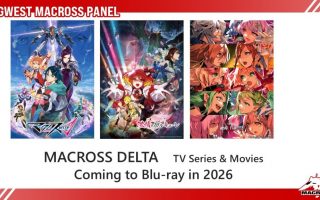Ask John:
Question:
Does an anime lose its artistic value given its commercial nature in comparison to originally produced works such as Princess Kaguya or Angel’s Egg?
Answer:
American experience and commonplace knowledge traditionally suggests that cinematic media created as “extended commercials” are nearly always garbage. In some cases the creators seemingly had little idea about what made the source franchise popular, for example, the 1993 Super Mario Bros. movie. Or the originating franchise was a weak source for adaptation from the outset, for instance, the 2012 feature film Battleship based on Milton Bradley’s 1967 board game. Occasionally “extended commercials” are objectively bad yet still manage to ride zeitgeist and become successful anyway, for example Knight Rider, arguably an extended commercial for the 1982 Pontiac Firebird Trans Am, and 2025’s A Minecraft Movie. So American observers, especially, have an instinctive gravitation to assume that Japanese produced shows based on commercial products are likewise low value, insubstantial, disposable products that don’t rival the artistic integrity of purely artistic original creations. But observers should remember two important, relevant facts. Nearly all anime is adapted from earlier existing source material. Especially over the past thirty-five years a drastic majority of all anime productions have been adaptations, yet the average artistic quality of modern anime has remained remarkably high. If the majority of modern anime was cheap, disposable, thoughtless crap, it wouldn’t be remotely as popular as it is globally. Moreover, Japan’s anime production industry wants to make good animation. The working conditions in Japan’s animation industry are notoriously challenging. The only people who enter and stay within Japan’s anime production industry are committed devotees who love animation and artistic creativity enough that they’re willing to endure long hours and low pay just for the opportunity to artistically express themselves. In many cases, anime “extended commericals” that exhibit abhorrent quality can be blamed on inadequate budgets or production time rather than the creativity and desire of screenwriters and animators.
Certainly some of the most beautiful, memorable, creative, and artistically exceptional anime ever made have been wholly original productions: Kanashimi no Beladonna, Tenshi no Tamago, Tenkuu no Shiro Laputa, Serial Experiments Lain, Shinseiki Evangelion, Cowboy Bebop, Denno Coil, Shoujo Kakumei Utena, Seirei no Moribito, Ano Hi Mita Hana no Namae wo Bokutachi wa Mada Shiranai, Puella Magi Madoka Magica. But there also exist enough “extended commericals” exhibiting exceptional artistic integrity to bely the assumption that all such productions are inferior. Popotan (2003) and Princess Connect! Re:Dive (2020) are both adaptations of computer games, yet both anime TV series are excellent. Popotan is charming, heartfelt, mysterious, and moving. Both seasons of the Princess Connect anime exhibit masterful animation quality, rich characterizations, and a convincing sense of dramatic fun. The 1998 Popolocrois Monogatari television series is technically based on Yosuke Tamori’s manga although the anime is clearly inspired directly by the 1996 Playstation RPG. The tone and aesthetic of the charming, whimsical fantasy feels very comparable to Studio Ghibli theatrical productions.
The 1996 Midori no Makibao & 2022 Gunjo no Fanfare anime prove that horse-racing themed anime don’t have to be based in commerce. However, the 2018 Uma Musume Pretty Derby franchise practically functions as an advertisement for the Japan Racing Association since the characters and plots of the anime are all based on real-life derby horses, competitions, and race courses affiliated with the Japan Racing Association. Moreover, the Uma Musume anime was created as a spin-off from Cygames’ computer game franchise, so the anime is doubly commercial inspired. Yet the anime is itself intensely affecting, dramatic, and cinematically satisfying. As filmic entertainment, the Uma Musume franchise is tremendously more artistically impressive than expected to be. Similarly, the 2009 Umi Monogatari ~Anata ga Ite Kureta Koto~ television series was a spin-off from an arcade pachinko game. Yet largely due to the involvement of animation co-director Junichi Sato, the anime is lovely looking and surprisingly deeply emotional.
2012 brought viewers both the ABK0048 & Black Rock Shooter television series. The galaxy-spanning sci-fi adventure series ABK0048 was based on the real-life idol group AKB48. So one may wonder how a group of bubblegum pop vocalists could inspire a futuristic drama about a space-faring revolutionary group opposing an oppressive galactic government, think of something like a moe anime version of Styx’s Kilroy Was Here concept album. But thanks to the involvement of experienced screenwriter Mari Okada, the creator of “AnoHana,” and chief direction by Macross & Chikyuu Shoujo Arjuna creator Shouji Kawamori, ABK0048 consistently exhibited stronger animation quality and narrative development than it had any right to possess. Being based on a single five-minute music video that was itself inspired by a single character illustration, the Black Rock Shooter television anime could be argued to exist as a promotion for pop band Supercell and Crypton Future Media’s vocaloid software “Hatsune Miku.” Yet the BRS anime series went to unexpectedly dark, emotional territory revolving around depression, suicidal tendencies, and child abuse.
2019’s stop-motion animation series Rilakkuma to Kaoru might not immediately seem to qualify as an “anime” because it’s not hand-drawn animation, yet it is a form of Japanese created animation. More relevantly, the show functions as a marketing product for Netflix and an advertisement for San-X’s franchise of mascot merchandise. However, thanks to the artistic creativity of animators Dwarf Studio, and director Masahito Kobayashi reportedly being inspired by the esoteric films of director Wes Anderson, the Rilakkuma to Kaoru anime is charming, delightful, whimsical, and thoughtful. When it could have been highly superficial and shallow, the series is rich, deep, satisfying and rewarding, an impressive artistic achievement despite its very blunt commercial origins.
Stereotypes do come from somewhere. In fairness, plenty of bluntly commercially inspired anime, particularly adaptations intended to promote video games, do rank among the worst anime productions ever made, either due to inadequate planning or budget or production incompetence. Just a handful of examples include the 2014 Wonder Momo web anime series and the Tenkuu Danzai Skelter Heaven, Panzer Dragoon, and Generation of Chaos OVAs. In its defense, the 2005 Hametsu no Mars “OVA” has a terrible reputation, but that release was literally just a compilation of the cut-scenes from the PS2 game released two months earlier, the animated scenes stitched together without any context or editing, so naturally it’s incoherent.
The Abunai Sisters: Koko and Mika mini-series was produced to capitalize on the popularity of Japanese celebrities Kyoko and Mika Kano. The series was a commercial flop upon its 2009 Japanese release and was quickly decried as one of the worst anime productions ever made. In fairness, the series may be intentionally satirically bad. The exaggerated character designs were drafted by illustrator Susumu Matsushita, best known as the creator of the mascot character for the Orix Buffalos baseball team. The anime was produced with English dialogue although the real-life Kano Sisters didn’t speak English. The anime was produced by Production I.G, which has produced some of the finest, most technical and sophisticated anime ever produced. And the real-life Kano Sisters themselves were a bit of a self-aware parody. So all evidence points to the fact that the Abunai Sisters anime is deliberately silly and corny. After all, it doesn’t include sharks with lasers, but it does begin with a shark with a chain-gun.
By similar token, not all original anime productions are artistic masterpieces. Chargeman Ken, Gundoh Musashi, and Kissdum Engage Planet were all original TV anime series. All three are ranked among the worst professional anime productions ever released partially due to their incompetent or incomplete production. Similarly, the 1999 original feature film Gundress is a terrible mess featuring animation that wasn’t finished for its theatrical release and only the most minimal paste-over for its later home video release. The 2019 feature film Ashita Sekai ga Owaru Toshitemo has so many plot holes and stupid plot contrivances that the film becomes infuriating to watch. 2017’s Hand Shakers television series is notorious for its practically photosensitive seizure inducing CG animation and cinematography. The heavily promoted 2020 Gibiate TV series failed to succeed or launch its intended multimedia franchise due to poor production values and senseless story development.
Ultimately, regarding anime, artistic quality must be considered on a per-production basis excluding consideration of the conceptual origins of the productions. Likewise, setting aside the fact that nearly all professionally made anime are produced as commercial products, there are many existing examples of overtly commercial anime that exhibit exceptional artistic credibility as well as unique and original anime that suffer with poor artistic production.




